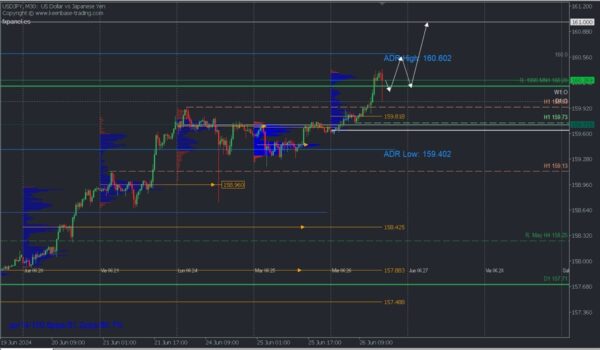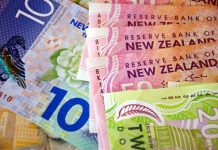Intraday Bullish Scenario: Wait for a pullback to 160.12 with TP1 at 160.60 and TP2 at 160.80, with an S.L. below 159.90 or at least 1% of the account capital. Apply Trailing Stop.
Bearish Scenario: Sell below 160.60 (if a PAR forms) with TP1 at 159.81, TP2 at 159.73, and TP3 at 159.40 with S.L. at 160.70 or at least 1% of the account capital.
Fundamental Analysis
This week, the USDJPY pair has experienced significant movements driven by various economic and political factors. The Japanese yen has shown weakness against the US dollar due to several events.
- Weakness of the Japanese Yen: The yen has been on a nearly 10-day losing streak, with traders watching for possible interventions by the Japanese Ministry of Finance. Authorities have hinted that they will not intervene until after the US Personal Consumption Expenditures (PCE) report, which has kept volatility high.
- Strength of the US Dollar: The US Dollar Index (DXY) has risen thanks to hawkish comments from the Federal Reserve and the yen depreciation. Political uncertainty in Europe, especially due to the snap elections in France and low consumer confidence in Germany, has also contributed to the dollar’s strength.
Key Ideas
The intervention of the Japanese Ministry of Finance is likely if US economic data is stronger than expected.
Technical Analysis, H4
USDJPY
- Supply Zones (Sells): 160.00
- Demand Zones (Buys): 159.46, 158.96
The pair surpassed the key resistance of 1990 at 160.20 today, challenging the BoJ’s tolerance levels. However, the pair has an average bullish range to 160.60, which is expected to extend the day’s rise, with attention to the round level of 161.00 for the rest of the week ahead of the US PCE data on Friday.
The important pullback zone is the round level at 159.99, the broken resistance at 158.90, and the POC of the initial sessions at 159.81, from where a new rally towards 160.80 or 161.00 is expected, as long as the last relevant intraday support at 159.73 is not decisively broken.
Selling below the key support zone will pave the way for more extended sales towards the high volume node around 159.45 and the average daily bearish range at 159.40.
POC Explained: POC = Point of Control: It is the level or zone where the highest concentration of volume occurred. If a bearish movement originated from it previously, it is considered a sell zone and forms a resistance area. Conversely, if a bullish impulse occurred from it previously, it is considered a buy zone, usually located at lows, thus forming support zones.














